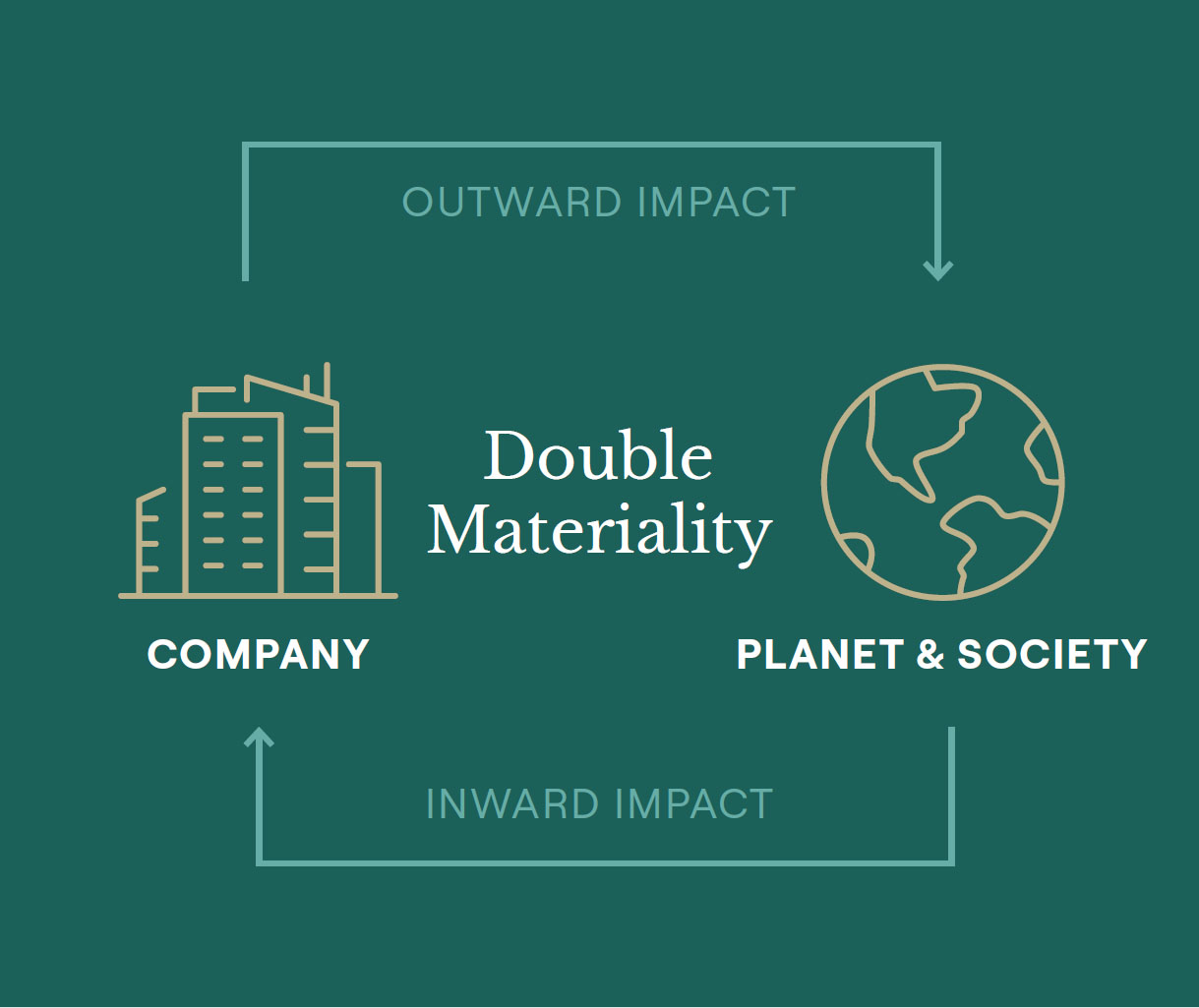Our firm-level impact
We continue to define, measure and mitigate our firm-level impact (corporate sustainability) across a range of ESG factors and will keep our approach under review as we grow our global presence.
Our sustainability efforts are necessarily on-going and remain informed by evolving regulatory standards (such as the EU-CSRD – Corporate Sustainability Reporting Directive) and concepts such as ‘double materiality[1]‘ and ‘net impact[2]‘.
Our work to date has involved an in-house review of the most material ESG factors relevant to our business, with a focus primarily on firm-level operations, as well as collaboration with a third party to refine our analysis. This effort has adopted a double materiality approach, addressing both and financial materiality as outlined within the European Sustainability Reporting Standards (ESRS).

We see our current work as a foundation for deeper analysis and a more comprehensive approach to corporate sustainability reporting, aiming for greater alignment with the ESRS’s double materiality approach.
The initial findings to date have proven helpful in validating our existing firm-level initiatives, such as responsible food sourcing, which have been implemented over several years, and in identifying potential future focus areas.
Firm sustainability
Below are some of the most material firm-level issues emerging from the assessment.
| Environmental |
| Climate Risk, Carbon Accounting, Financed Emissions |
| Responsible Food Sourcing |
|
|
| Social |
| Diversity, Equity and Inclusion |
|
|
| Economic |
| Sustainable Procurement, and Supply Chain Sustainability and Management |
|
|
| Purpose |
| Incorporation of ESG Factors into the Investment Process |
| Governing Bodies and ESG |
| Business Ethics |
| Data Security |
| Compliance and Risk Management |
These findings provide a solid baseline for material issues at the firm level and will aid the development of future double-materiality assessments, aligning with the concept of ‘dynamic materiality[3]‘. Going forward, we aim to capture ESG data at the level of the firm that reflects these materiality points with sustainable finance regulatory developments.
[1] Concept in which companies must consider how their actions impact both people and the planet, and how sustainability issues can affect their financial wellbeing.
[2] The net impact of a company being the net sum of costs and benefits that the company creates. Costs (negative impacts) and benefits (positive impacts) include all types of costs and benefits, including externalities.
[3] Dynamic materiality: understanding that material matters are subject to change over time and will need to be under consistent review.